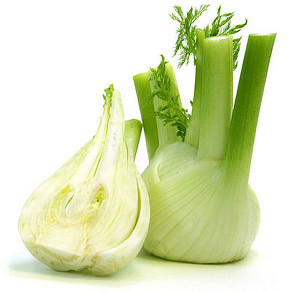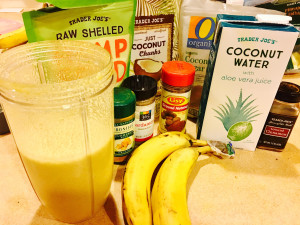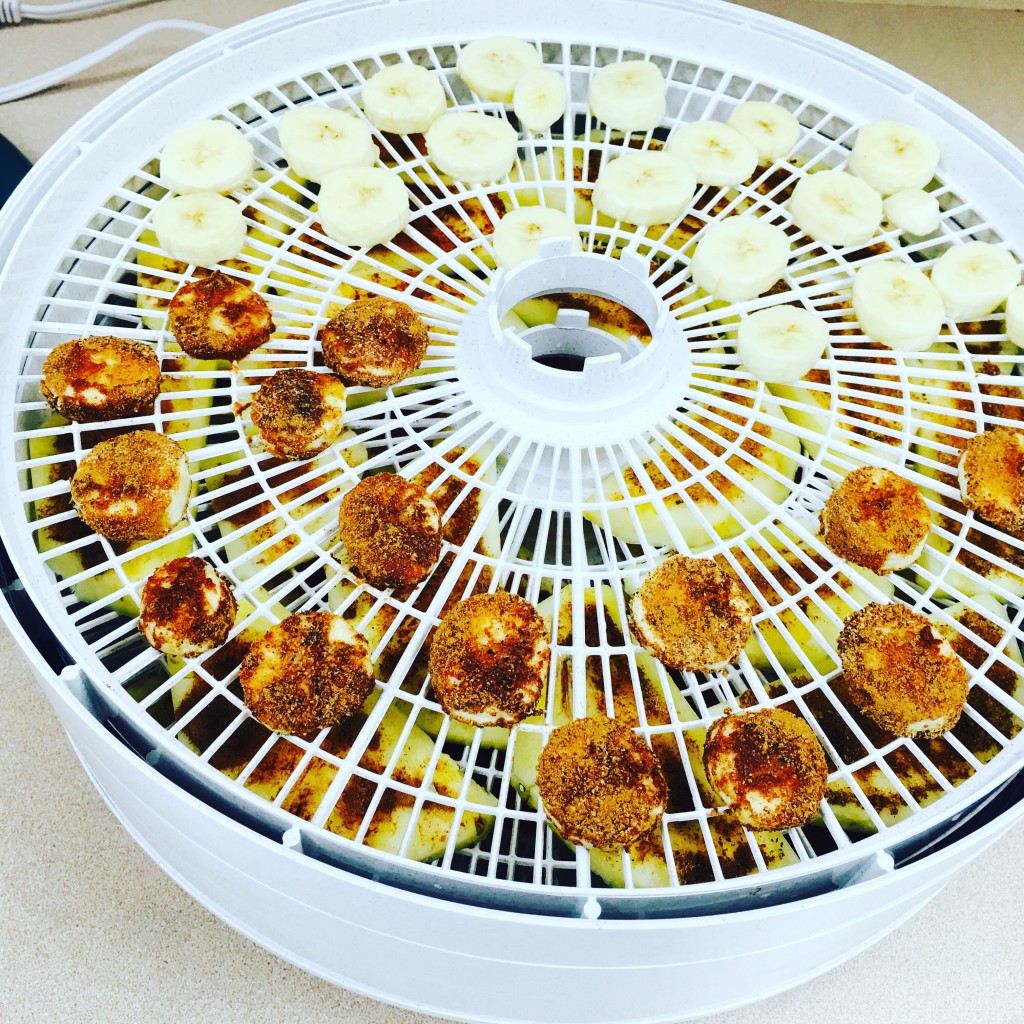Tags
acne aging anti-aging beauty detox diet exercise fasting healing health healthy lifestyle healthy living healthy recipes inspiration juicing Living la Vida Raw meditation mindfulness Move Your Body Natural Beauty natural cures Natural Cures natural remedies nutrition nutritionist parasites raw raw food Raw Food for Thought raw foods raw girl Raw News raw recipes Raw Spirit Recipes skin spirulina stress vegan vegan lifestyle vegan recipes vegetarian Veggie Love wellness yogaNewsletter Sign-up
Tag Archives: raw food
Too Many Reasons to Love Fennel
So I have to admit…I was completely sleeping on the awesomeness of fennel. Fennel, scientifically known as Foeniculum Vulgare Miller, is one of those root vegetables that you will likely pass in the veggie aisle and not even give a second look. Fennel, thought to have originated in Southern Europe and Mediterranean regions. is a root vegetable related to carrots, parsley, dill, and celery. It’s an excellent source of vitamin C (17% of the daily value), fiber, iron, B vitamins, potassium, folate, and more. Fennel can provide relief from anema (thanks to it’s iron content), and is also useful for boosting immunity, curing constipation or flatulence, respiratory disorder, menstrual disorders, and improving eyesight. Dope part is every part of the vegetable can be used including the root bulb, seeds, and the wispy leaves. For centuries, Ancient Chinese medicine incorporated fennel to treat congestions, sitmulate apetite, and even increase the flow of breast milk. Essential oil extracted from fennel can offer relief from an upset stomach, and fennel tea can soothe a sore throat. Not to mention it’s sweet licorice like flavor has made it great to freshen the breath, so it’s often found in natural toothpastes. Need I say more? I fell in love with fennel again when I added it to my Ultimate Beauty Salad. Hope that now you know more about fennel’s awesome nutritional profile and uses for ailments, you might need to consider doing a double take the next time you spot fennel in the veggie aisle. -Xo Raw Girl
Reframing Exercise: So You Hate to Move?
Do you hate exercise? Are you one of those people who cringes or all of a sudden feels like you need a nap when you hear the word gym? This post is for you boo! The human body is designed to move, and as you’ve probably heard exercise can not only take years off your life, but can also assist in preventing a host of diseases and reduce stress. “It would appear that cardiovascular conditioning has physiologic characteristics which would counterbalance those induced by such stress. Accordingly, it appears logical that cardiovascular conditioning by aerobic exercise techniques is an effective therapeutic tool,” (Roberston,1976). So there’s no debate you should be exercising, but since that’s a dirty word lets think about the “E” word a little differently. First off try committing to a minimum goal of 15 minutes per day of activity. Why will this help you? Well, a 2011 study published in Basic and Applied Psychology showed that: “leading individuals to mentally reframe the time required for an exercise program (e.g., 2hr per week) in terms of the equivalent daily amount (e.g., 17min per day) reduced the perceived time commitment and increased people’s willingness to try the program.” Next, in order to get in your daily time, you don’t need to be at the gym. There are a host of things you can inject into your busy route daily that can help you get a little more movement into your life. Below’s a short list of a few things you can consider. Creating group activities with your family or friends can help it feel more like fun and less like –Xo Raw Girl
- Park far away from your car and walk to the store
- Take the stairs rather than the elevator
- Buy a pedometer, track your daily steps and set goals to increase your steps weekly
- Gardening
- Playing tag or dancing around with kids
- Chores around the house
- Bike riding
- Taking a pool day and swimming
- Walking in a park
- Bike riding with your entire family
References:
Eliot, R. S., Forker, A. D., & Robertson, R. J. (1976). Aerobic exercise as a therapeutic modality in the relief of stress.Advances In Cardiology, 18(0), 231-242.
Peetz, J., Buehler, R., & Britten, K. (2011). Only Minutes a Day: Reframing Exercise Duration Affects Exercise Intentions and Behavior. Basic and Applied Social Psychology, 118-127.
Have you checked out my new online classes yet? In my new course, Staying Ageless 30+ you will learn about Diet Basics, Lifestyle Factors, and elements of Longevity that promote an ageless way of life. Over the course of three modules you learn what to eliminate from your diet to stay ageless, how to ensure your body is receiving adequate nutrition, powerful detox rituals you can incorporate to increase your longevity, beauty remedies that will leave you glowing, and how to exercise effectively and get results. In addition you will learn health lessons directly from renowned longevity and health experts that will equip you to transform your lifestyle. You can still enroll! Check out the class HERE to preview the curriculum our save your seat! -Xo
Got Mg? How Magnesium Deficiency Can Stress You Out
As the saying goes: “I’m too blessed to be stressed,” but if I don’t supplement my Mg, stress could show up at my front door anyway! Did you know deficiencies in certain nutrients can actually create stress or exacerbate the stress in your life? Crazy, huh? “Well insufficient amounts of just one mineral, magnesium, can result in anxiety, asthma, anorexia, birth defects, hardened arteries, mental disorders, hyperactivity, hypertension, hypothermia, insomnia, menstrual pain, muscle weakness, tremors, seizures, AND it’s been linked in studies to be associated with increased risk of cancer development.” There’s a past article on Mg on my site, but because it’s such an important mineral, I’m revisiting it again and including some of the same info.
Here’s the deal when it comes to stress and magnesium: lack of magnesium tends to magnify the stress reaction, which in turn creates more stress and worsens the problem. Research has shown that adrenaline and cortisol which are by-products of our “fight or flight response” when we are anxious or in danger are directly associated with decreased magnesium. The problem with stress and “fight or flight” is most often we have that response to things that are not life threatening at all. The response is meant to assist us in times of danger, but it becomes detrimental to our health if our stress levels are way up consistently for drama at work, toxic relationships, unexpected tragedy or whatever stressors may show up in our daily lives.
Moral of the story? If you want to reduce your stress levels magnesium is your new bff. Magnesium and stress relief go together like peanut butter and jelly. So it’s important to take a look at your diet and ensure you are getting in some Mg rich foods.
The RDA and UL (Tolerable Upper Limit) levels for magnesium for adults (over 18) are as follows:
| RDA | Age | Male | Female |
| 19-30 | 400 mg | 310 mg | |
| 31-50 | 420 mg | 320 mg | |
| UL | 19 + | 350 mg | 350 mg |
Mg can be helpful as a therapeutic intervention for these conditions:
- Anxiety, irritability
- Insomnia
- Muscle cramps
- Hypertension
- Cardiovascular diseases
- Diabetes mellitus
- Migraine headaches
- Asthma (as intravenous infusion for an acute attack)
Food Sources of Magnesium
Mustard greens, blackstrap molasses, turnip greens, sea vegetables, green beans and collard greens, spelt, cucumber, bell peppers, celery, kale, cantaloupe, cacao, brazil nuts, almonds, cashews and a variety of seeds, including sunflower seeds, pumpkin seeds, sesame seeds, and flaxseeds. -Xo Raw Girl
References:
Haas, E. M., & Levin, B. (2006).Staying healthy with nutrition: the complete guide to diet and nutritional medicine. Berkeley: Celestial Arts.
Ross, A. C., Caballero, B. , Cousins, R. J., Tucker, K.L. & Ziegler, T. R. (2014). Modern Nutrition in Health and Disease. (11th ed.). Baltimore, MD: Lippincott, Williams & Wilkins.
National Institutes of Health. 2016. Magnesium: Fact sheet for health care professionals. Retrieved from: https://ods.od.nih.gov/factsheets/Magnesium-HealthProfessional/
Aldrich, N. (2016). Magnesium. Retrieved from https://learn.muih.edu/courses/4673/pages/magnesium?module_item_id=108286.
Healthy Action of the Week: Get Yo Greens In!
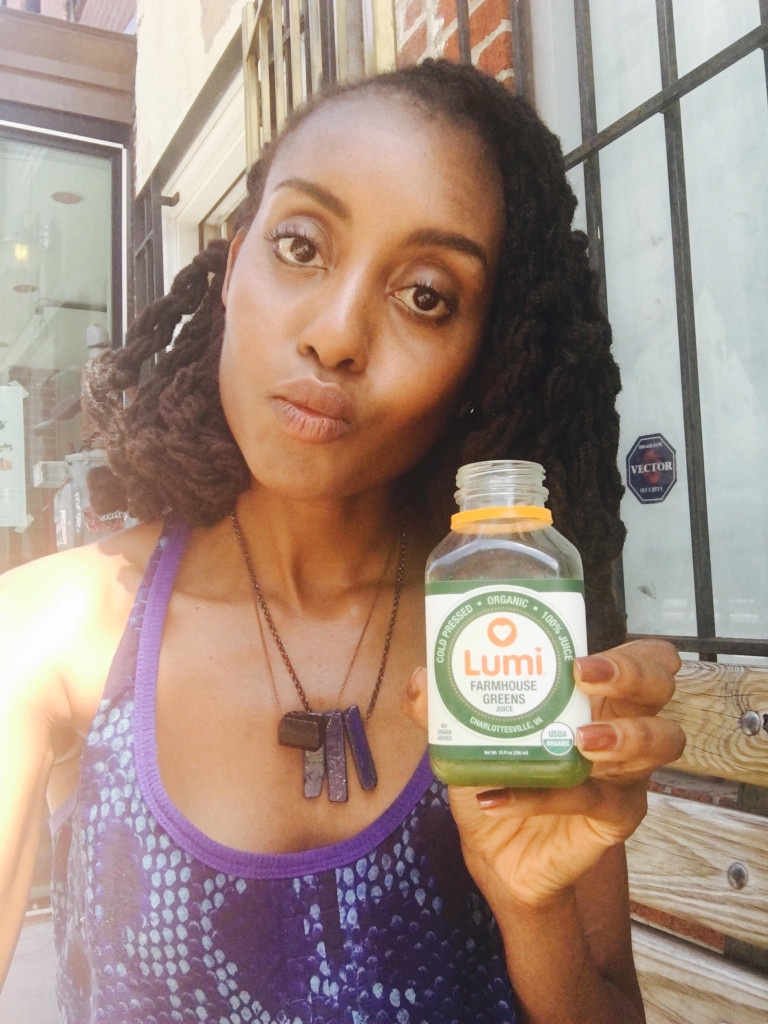 Every day this week try to incorporate fresh organic green vegetables in at least one meal. Your body will thank you. -Xo Raw Girl
Every day this week try to incorporate fresh organic green vegetables in at least one meal. Your body will thank you. -Xo Raw Girl
Some benefits of chlorophyll found in green vegetables include:
- Increases the functioning of the heart
- Improves the health and wellness of the intestines
- Cleanses the liver
- Improves the overall health of the vascular system
- Maintains healthy bones and strong muscles
- Protein. Yes! Greens have protein
- Lowers or maintain healthy blood pressure
- Helps body to detox and cleanse of impurities naturally
- Improves the quality of your skin
- Can increase the quality and quantity of your red blood cells because the compound has a chemical composition very similar to hemoglobin
- Can lower your risk for developing certain types of cancer
***Warning: eating a larger amount of green vegetables may accelerate healing or cause an increase in joie de vivre, sexiness, youthfulness, and overall magnetism. Heed this advice at your own risk.****
The Skinny on B Vitamins
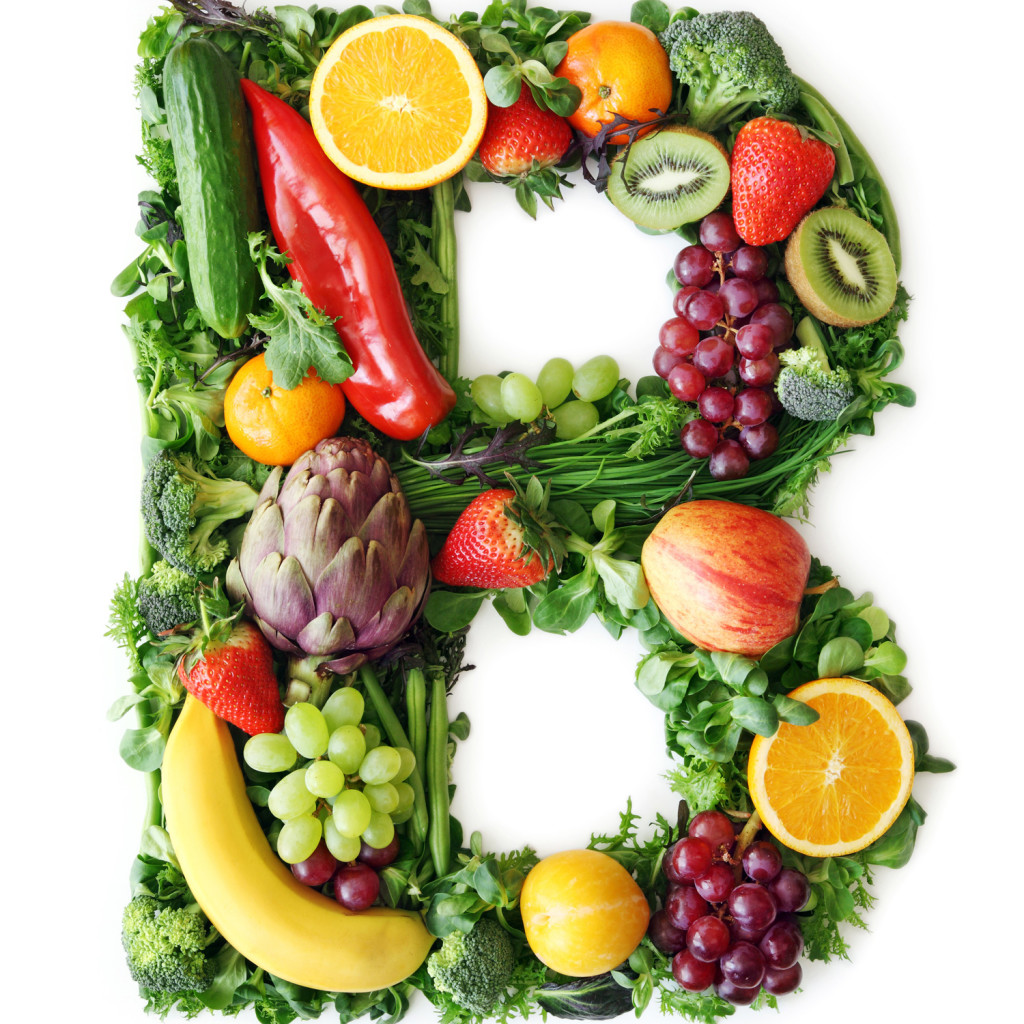 We’ve all heard about RDA or recommended daily allowance for vitamins and minerals that are set by the Food and Drug Nutrition Board and give us the estimated minimal amount that people need to consume in order to avoid deficiencies. However, the optimal level of consumption of any micronutrient should actually fall well above the RDA for maintaining adequate nutrition and optimal health. B vitamins in particular can be consumed several times more than the RDA. When it comes to the optimal level, it’s an amount that can be consumed in order to allow for the nutrient to provide proper functioning while now allowing symptoms of toxicity to develop or any adverse symptoms. B-vitamins are essential for the metabolism of glucose, act as co-enzymes in mitochondrial aerobic respiration, and are instrumental in cellular energy production and the production of ATP (basically the process of turning our food into energy).
We’ve all heard about RDA or recommended daily allowance for vitamins and minerals that are set by the Food and Drug Nutrition Board and give us the estimated minimal amount that people need to consume in order to avoid deficiencies. However, the optimal level of consumption of any micronutrient should actually fall well above the RDA for maintaining adequate nutrition and optimal health. B vitamins in particular can be consumed several times more than the RDA. When it comes to the optimal level, it’s an amount that can be consumed in order to allow for the nutrient to provide proper functioning while now allowing symptoms of toxicity to develop or any adverse symptoms. B-vitamins are essential for the metabolism of glucose, act as co-enzymes in mitochondrial aerobic respiration, and are instrumental in cellular energy production and the production of ATP (basically the process of turning our food into energy).
How B vitamins get to the brain?
The B vitamins for brain function are actively transported across the blood barrier by dedicated transport mechanisms. Cellular uptake mechanisms dictate the distribution of where all the B vitamins are allocate once in the brain. Following that B vitamin levels are controlled by several homeostatic mechanisms which guarantee that brain concentrations remain comparatively high. Much of the evidence related to the impact of B vitamins on the brain has not been consistent. Some studies suggest that B vitamins do have significant benefits to brain function.
The pentose phosphate pathway is a necessary step in the synthesis of fatty acids, steroids, nucleic acids and the aromatic amino acid precursors to a range of neurotransmitters and other bioactive compounds essential for brain function. In essence B vitamins will help keep our thinking sharp and keep us from going cray cray. Thiamine is a coenzyme in that pathway and acts as a cofactor during metabolic processes and contributes to the structure and function of cellular membranes.
Why you care? Although B vitamins are totally essential, prevalence of B vitamin deficiencies has increased in developed societies. Figures calculated for RDA and other nutritional requirements have barely changed over the past four decades despite glaring facts that point to the decreasing ability to absorb nutrients from our food and soil. Studies have found that populations in developed countries such as the U.S. do not consume the RDA of B vitamins. As obesity continues to climb there is a clear relationship between obesity and malnutrition because the SAD (Standard American Diet) consists of too much high fat, sugary, processed or fast foods which have little to no nutrition in the form of vitamins and mineral. Large portions of developed populations have been shown by studies to have biochemical levels of B vitamins that could cause deficiency related diseases, or reaching levels considered “marginal deficiency” which isn’t completed deprived but still not optimal either. All of these factors are a part of why deficiencies in developed societies occur.
Supplementation
Studies have shown that supplements higher in B vitamins and lower in other micronutrients have stronger effects than supplements with lower levels of B vitamins and higher concentrations of other micronutrients. So it may be wise if supplementing to purchase a B-complex or B vitamins as separate from your daily multivitamin. Some foods rich in essential B vitamins like B1, B2, B3, and B5 include: spirulina, goji berries, beans, broccoli, turnip greens, asparagus, spinach, tomatoes, carrots, oranges, dandelion greens. –Xo Raw Girl
References
Kennedy, D.O. (2016). B Vitamins and the Brain: Mechanisms, Dose and Efficacy – A Review. Nutrients. 27(8), 2. doi: 10.3390/nu8020068.
Recipe! Deliciously Dope Coconut Turmeric Milk Smoothie
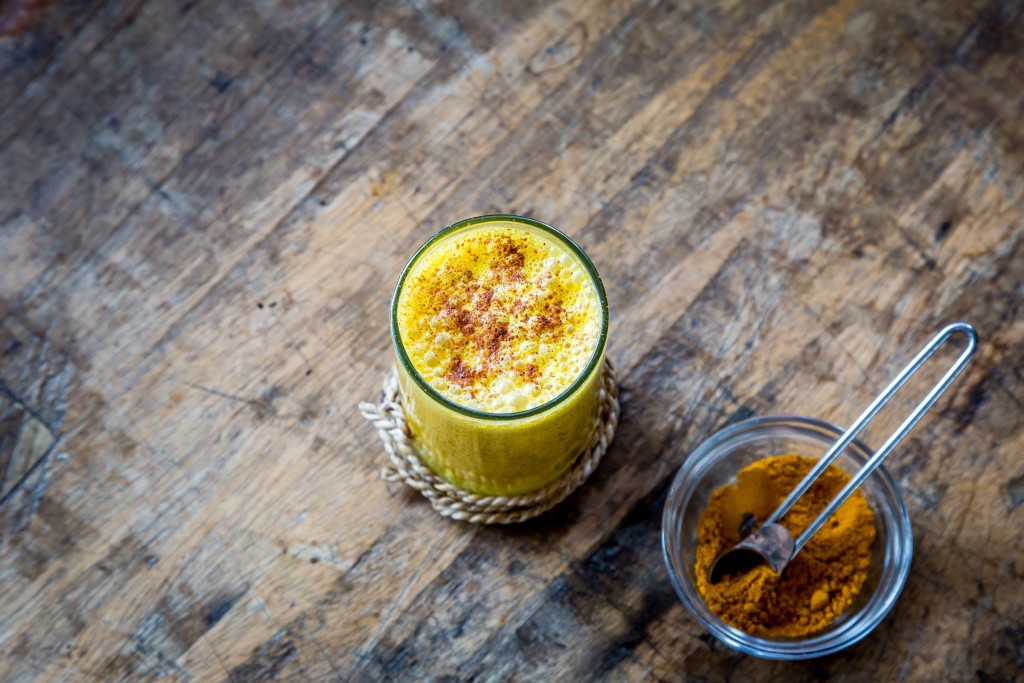 Have you ever tried turmeric milk or “golden milk”? There are many variations and more people seem to be catching on to this awesome drink due to the amazing benefits of turmeric. Not only is turmeric high in antioxidants and useful for reducing inflammation, it can kill cancerous cells. You can make a lovely turmeric milk with similar ingredients sans the banana and hemp seeds and heat it on the stove for a warm, cozy before bedtime drink. Because I heart turmeric, I wanted to come up with a smoothie that incorporates it and this is what I came up with. Below also check out a video on the benefits of turmeric. -Xo Raw Girl
Have you ever tried turmeric milk or “golden milk”? There are many variations and more people seem to be catching on to this awesome drink due to the amazing benefits of turmeric. Not only is turmeric high in antioxidants and useful for reducing inflammation, it can kill cancerous cells. You can make a lovely turmeric milk with similar ingredients sans the banana and hemp seeds and heat it on the stove for a warm, cozy before bedtime drink. Because I heart turmeric, I wanted to come up with a smoothie that incorporates it and this is what I came up with. Below also check out a video on the benefits of turmeric. -Xo Raw Girl
Coconut Turmeric Milk Smoothie
Ingredients:
2 bananas
1/4 -1/2 cup coconut chunks
coconut water
1 teaspoon coconut palm sugar
1-2 Tablespoons Hemp Seeds
Turmeric to taste and for color, add as much as you prefer (1/2 teaspoon minimum)
Dash of Cardamom
Dash of Nutmeg
2-3 Dashes of Cinnamon
1 dash of black pepper (optional, brings out the flavor of the turmeric more)
What if Your Healthy Food Was Unhealthy?
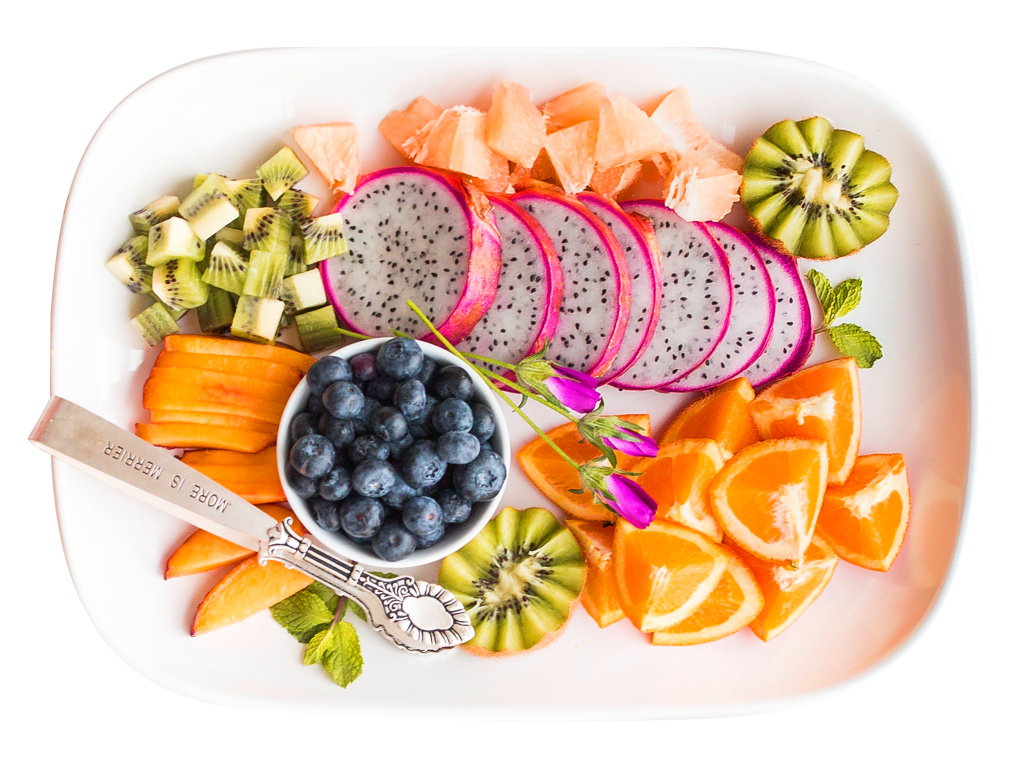 Today’s exercise in “what the heck? Why not?” was to identify a food that I perceive to be a “good” food and look for primary literature that contradicts my view of that food. Why would I do this? I find it so interested how much health information is out there and depending on what a company or organization stands to gain, you may hear biased evidence about particular kinds of food. Obviously this happens the most in the meat, dairy, and processed food industry; since vegetables have NEVER been proven to cause cancer, hypertension, or osteoporosis. But anywhoo, the gist is, it is healthy to reconsider your viewpoint from time to time and in the healthy living world, it doesn’t happen enough, with various sides clinging to their opinion like it’s the religious truth.
Today’s exercise in “what the heck? Why not?” was to identify a food that I perceive to be a “good” food and look for primary literature that contradicts my view of that food. Why would I do this? I find it so interested how much health information is out there and depending on what a company or organization stands to gain, you may hear biased evidence about particular kinds of food. Obviously this happens the most in the meat, dairy, and processed food industry; since vegetables have NEVER been proven to cause cancer, hypertension, or osteoporosis. But anywhoo, the gist is, it is healthy to reconsider your viewpoint from time to time and in the healthy living world, it doesn’t happen enough, with various sides clinging to their opinion like it’s the religious truth.
I chose to focus on Nori, a type of seaweed I love to consume especially in dried unsalted form, and consider healthy because of its nutrient content. My personal bias with this food is that I began to consume it, along with other seaweeds when changing my diet to transform my acne problem skin. Seaweeds played a major part in my healing so I have firsthand positive experience with it. Nori is fat-free and provides the body with Vitamin A,C, folate, iron, calcium, magnesium, potassium, and protein. Although it is highly debated, studies also support that dried Nori is the most excellent source of B12 for vegetarians, and contains less dietary iodine than other seaweeds, (Watanabe et al, 1999).
It was actually difficult to find to many studies or journals that asserted Nori is a “bad” food, but what I did find are studies that confirm the heavy metal contamination of commercially available seaweed (Nori being the most popular). “On April 13, 2021 Enviroreporter.com tested Nori seaweed from Japan bought from a Los Angeles store….the [seaweed] was 94.7% above normal. These tests were performed with an Inspector Alert nuclear radiation monitor, the same detector used in over 1,500 tests for Fukushima radiation beginning four days after the March 11, 2011 triple meltdowns at the destroyed Fukushima Daiichi six-reactor complex in Japan.” Another study found levels of total and inorganic arsenic in seaweed. “Using 31 samples (all purchased as a dried product) covering five varieties of seaweed were collected from various retail outlets across London and the internet. Arsenic was detected in all samples with total arsenic at concentrations ranging from 18 to 124 mg/kg. Inorganic arsenic, which can cause liver cancer, was only found in the nine samples of hijiki seaweed that were analysed, at concentrations in the range 67–96 mg/kg. Other types of seaweed were all found to contain less than 0.3 mg/kg inorganic arsenic, which was the limit of detection for the method used,” (Rose, M. et al, 2007). In this study, Nori was not found inherently toxic, but low levels of arsenic were present.
After conducting this research, my views on this food have not changed. I do believe it is a healthy food. However, obtaining this information has caused me to be concerned and more intent on gathering information about where the Nori I consume is harvested and whether or not it has been tested, especially for radiation. Considering another contradictory opinion wasn’t bad at all, worst case I would have had to give up my delicious Nori rolls, and best case scenario, I learned something new to share with you. –Xo Raw Girl
References:
Netten, C. (2000). Elemental and radioactive analysis of commercially available seaweed.The Science of the Total Environment, 169-175.
Watanabe, F., Takenaka, S., Katsura, H., S. A. M. Zakir Hussain Masumder, Abe, K., Tamura, Y., & Nakano, Y. (1999). Dried Green and Purple Lavers (Nori) Contain Substantial Amounts of Biologically Active Vitamin B12 but Less of Dietary Iodine Relative to Other Edible Seaweeds.Journal of Agricultural and Food Chemistry, 2341-2343.
Rose, M., Lewis, J., Langford, N., Baxter, M., Origgi, S., Barber, M., … Thomas, K. (n.d.). (2007) Arsenic in seaweed—Forms, concentration and dietary exposure. Food and Chemical Toxicology, 1263-1267.
Collins, M. (2012, April 20). Japanese Seaweed Radiation Doubles. Enviroreporter.
Practicing Contentment
Want to enroll or find out more about our class: Yoga for Radiance & Beauty? Visit rawbeautyinabox.com. -Xo Raw Girl
Recipe! Banana Chips
Bananas anyone? Eating high raw requires you step yo snack game up to a new level. It’s always great to have something to take with you on-the-go. But time is money, and sometimes we get lazy about preparation. These banana chips take no time at all to prepare. Just stick them in the dehydrator, go about your business, and by the end of the day you’ll have a yummy snack ready. -Xo Raw Girl
Ingredients:
Bananas
Lemon Juice
Spice Mix: 1- 2 Tablespoons Cinnamon, Dash of Cardamom, Dash of Nutmeg
Directions:
Peel and slice to about a ¼ – inch thickness.
Dip banana slices into a bowl of lemon juice. This lessens the browning of the banana chip. (optional)
Shake off extra lemon juice. Put spices onto a small plate or bowl and dip banana chip into spices.
Can dip half or all of the chip. Then lay the banana slices on the dehydrator tray.
Dehydrate at 140 degrees F for 1 hour
Turn the temperature down to 115 degrees F, dehydrate 8 hours.
Half way through, stop the dehydrator and flip over all the banana slices. The slices are easy to peel off the dehydrator tray when they are warm, and turning ensures dryness.
If the banana chips are leathery to crisp, they are done.
Cool the banana chips for a few hours in the dehydrator before removing them. Pack the dried chips into a Ziploc bag when they are cool. Store at room temperature.
Other Variations:
Make Plain
Dip banana slices into chopped nuts or dried coconut flakes prior to drying.
Sprinkle with cinnamon only.
Sprinkle with Celtic sea salt
Why Taking a Bath in Nature is Good For You
 I take my nature baths regularly. You may be imagining me in a bathing suit jumping into a lake, but that’s not exactly what I mean. Our family home is minutes away from a gorgeous park with a dense forest and hiking trail. Since moving to this area, one of my staple rituals has been to take a weekly walk or run on the forest trails. When I am stressed I walk it out on that trail. I have gone into that park feeling sad, stressed, and a host of other emotions, and I always feel like I leave whole. There’s something about the sounds of nature, the fresh air, the trees that just brings me back to one. Well it turns out, there is science behind it that suggests that exposure to nature can have remarkable benefits on human health. Not only can regular time in natural environments promote positive emotions, lower stress levels, improve working memory and increase feeling of being alive it also has been associate with increasing physical and mental energy, and accelerating the healing process when disease is present in the body. The Japanese Ministry of Agriculture jumped on nature bathing full force in the 1990s when their coined the term Shinrin-yoku, which literally means forest bathing! Some researchers say that the health benefits of forest bathing may be attributed to organic compounds called phytoncides that are given off by plants and allow those who breathe them in to achieve a more relaxed state. Others say benefits may come from the pure wonder and awe one feels when immersed in nature. Although the reasons are not necessarily definitive, we do know that taking a bath in nature is a good thing. So leave your bath salts and swimming trunks at home, grab your trail sneakers, and a hoodie and try to find some time to hit a trail. Your health: mind, body, and spirit will say thank you. –Xo Raw Girl
I take my nature baths regularly. You may be imagining me in a bathing suit jumping into a lake, but that’s not exactly what I mean. Our family home is minutes away from a gorgeous park with a dense forest and hiking trail. Since moving to this area, one of my staple rituals has been to take a weekly walk or run on the forest trails. When I am stressed I walk it out on that trail. I have gone into that park feeling sad, stressed, and a host of other emotions, and I always feel like I leave whole. There’s something about the sounds of nature, the fresh air, the trees that just brings me back to one. Well it turns out, there is science behind it that suggests that exposure to nature can have remarkable benefits on human health. Not only can regular time in natural environments promote positive emotions, lower stress levels, improve working memory and increase feeling of being alive it also has been associate with increasing physical and mental energy, and accelerating the healing process when disease is present in the body. The Japanese Ministry of Agriculture jumped on nature bathing full force in the 1990s when their coined the term Shinrin-yoku, which literally means forest bathing! Some researchers say that the health benefits of forest bathing may be attributed to organic compounds called phytoncides that are given off by plants and allow those who breathe them in to achieve a more relaxed state. Others say benefits may come from the pure wonder and awe one feels when immersed in nature. Although the reasons are not necessarily definitive, we do know that taking a bath in nature is a good thing. So leave your bath salts and swimming trunks at home, grab your trail sneakers, and a hoodie and try to find some time to hit a trail. Your health: mind, body, and spirit will say thank you. –Xo Raw Girl






